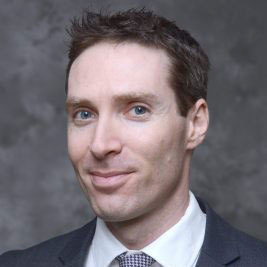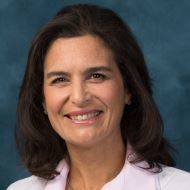Richard Heller, MD, MBA, a pediatric radiologist in Chicago, IL, contributed this post.
September is here. That means back-to-school season. My wife, who is not in medicine, recently came to me with questions regarding the possibility of our two children returning to in-person classes. Specifically, she read comments online that children don’t really get sick with COVID-19 and are not a significant concern to spread the disease.
I believe that the decision to return a child to in-person schooling (or not) is a family matter. There are unequivocal benefits to in-person learning, but that must be balanced against the risks of infection to children, school workers, families and others. That personal decision should be based on facts. With the understanding that our knowledge continues to evolve as more studies are published, here are the major facts that I discussed with my wife:
- Children usually get mild (or no) symptoms: The data to date show that most pediatric cases of COVID-19 are relatively mild, and many children may exhibit no noticeable symptoms. Symptoms are often nonspecific and include fever and cough but could include abdominal pain and diarrhea. Children also have a much lower hospitalization rate than adults.
- Some children develop severe illness: Although most children with COVID-19 do not get very sick, some do. A third of children that get hospitalized will require care in the ICU. Earlier in the pandemic, it was noted that some children developed a Kawasaki disease-like illness, which tended to develop a few weeks after infection. As of Aug. 20, nearly 700 cases of this new illness, termed Multisystem Inflammatory Syndrome in Children had been reported to the Centers for Disease Control and Prevention (CDC). This includes 11 pediatric deaths in 42 states and the District of Columbia. Most of these children were Hispanic/Latino or non-Hispanic Black. There seem to be broader racial disparities with severity of COVID-19 infection in children, with higher rates of hospitalization in Hispanic/Latino and non-Hispanic Black children.
- Children are likely silent spreaders: While not proving they are more infectious, a study from Chicago showed that, compared to older kids and adults, young children with mild to moderate COVID-19 have higher amounts of viral RNA in their nasopharynx. In other pediatrics infections, like respiratory syncytial virus, higher viral loads translate to a greater risk of being infectious. A Korean study showed that many children with COVID-19 were asymptomatic and that, of children who became symptomatic, most had symptoms that went unrecognized prior to diagnosis. This means that it is difficult, if not impossible, to recognize all children that are infected and potentially acting as silent spreaders. Thus, as noted in JAMA Pediatrics, a surveillance strategy based exclusively on testing those with symptoms will miss many cases. Of note, in that Korean study, asymptomatic children had detectable virus for an average of 14 days after initially testing positive; children with symptoms were positive even longer.
The bottom line is that children can get sick with COVID-19. They usually will develop only mild symptoms, if any. That good fortune is a double-edged sword when it comes to limiting the disease.
Children with COVID-19 can easily go undiagnosed, potentially spreading disease to others. That’s why children over two years of age should wear masks and why hand-washing is so important.
The American Academy of Pediatrics and the CDC, among others, have placed useful data online. As for sending kids back to school — that is a family issue. As I told my wife, this is a personal decision, but hopefully one that is grounded in science.
- How has COVID-19 impacted radiology private practices and families? Attend the Parenting and Radiology Practice in the COVID-19 Era webinar on Sept. 9 at 7pm ET, hosted by the American Association for Women in Radiology and the American College of Radiology® Commissions on Diversity and Human Resources, as we continue this discussion on childcare, academics and economics. Please share your thoughts in the comments section below and join the discussion on Engage (login required).


